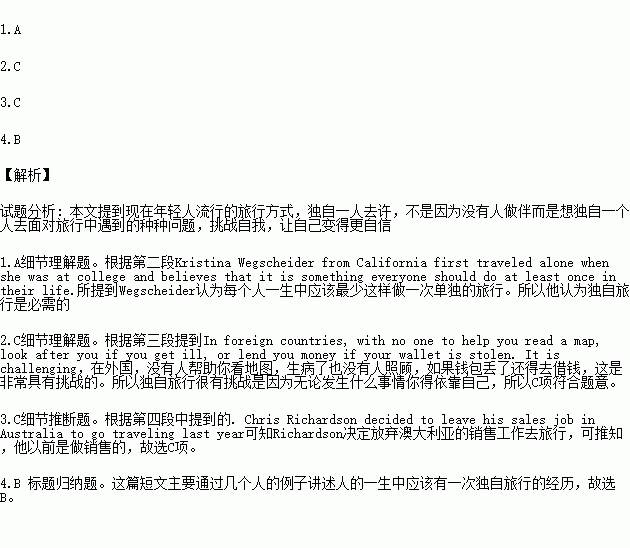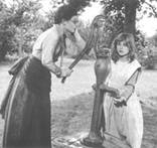题目内容
Now many young people are traveling around the world on their own, not because they have no one to travel with, but because they prefer to go alone.
Kristina Wegscheider from California first traveled alone when she was at college and believes that it is something everyone should do at least once in their life. “It opens up your mind to new things and pushes you out of your comfort zone.” Wegscheider has visited 46 countries covering all seven continents.
In foreign countries, with no one to help you read a map, look after you if you get ill, or lend you money if your wallet is stolen, it is challenging. This is what drives young people to travel alone. It is seen as character building and a chance to prove that they can make it on their own.
Chris Richardson decided to leave his sales job in Australia to go traveling last year. He set up a website, The Aussie Nomad, to document his adventures. He says he wished he had traveled alone earlier. “The people you meet, the places you visit, or the things you do, everything is up to you and it forces you to grow as a person,” said the 30-year-old man.
Richardson describes traveling alone like “a shot in the arm”, which “makes you a more confident person that is ready to deal with anything”. He said, “The feeling of having overcome something on my own is a major part of what drives me each day when I’m dealing with a difficult task. I walk around with my head up because I know deep down inside that nothing is impossible if you try.”
The great 19th century explorer John Muir once said, “Only by going alone in silence can one truly get into the heart of the wilderness.”
1.Which of the following will Kristina Wegscheider agree with?
A. Traveling alone is a necessary experience for everyone.
B. It is more meaningful to travel in foreign countries.
C. It is comfortable to travel around without a friend.
D. Traveling abroad helps people to find new things.
2.Traveling alone is challenging because ________.
A. you have to make things on your own
B. it is hard for you to prove yourself to others
C. you can only depend on yourself whatever happens
D. it will finally build your character
3.What can we infer about Chris Richardson?
A. He started traveling alone at an early age.
B. He was once shot in the arm.
C. He used to work as a salesman.
D. His website inspires others a lot.
4.What is the best title for the passage?
A. Travel Abroad B. Travel Alone
C. Travel Light D. Travel Wide and Far


